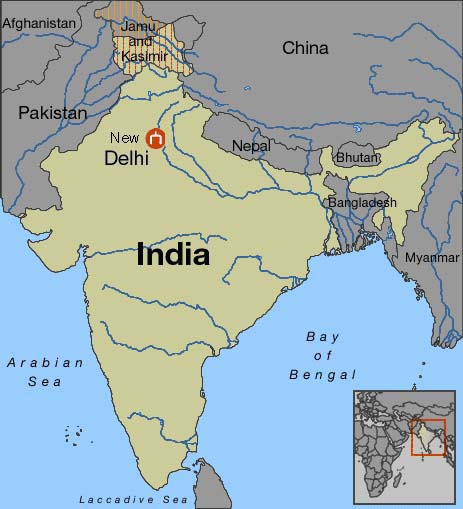Suspected Maoists kill three workers, more clashes in eastern India
 New Delhi - Three workers of the ruling party were killed by suspected Maoist rebels in West Bengal state Wednesday as paramilitary troops were sent to help quell the violence.
New Delhi - Three workers of the ruling party were killed by suspected Maoist rebels in West Bengal state Wednesday as paramilitary troops were sent to help quell the violence.
Three members of the Communist Party of India-Marxist (CPI-M), the leading partner in West Bengal's ruling coalition of leftwing parties, were shot dead in Jhargram block of West Midnapore district, about 178 kilometers south-west of state capital Kolkata, PTI news agency reported.
Six youths on two motorcycles opened fire on the victims at a roadside tea shop. The party workers had just returned from patrol in nearby forests to guard against Maoist-backed tribal agitators, police said.
Thousands of tribals backed by armed Maoist rebels torched police stations, CPI-M offices and gunned down three of the party's workers in Binpur-I block of West Midnapore late on Sunday.
Two party workers were killed in those attacks and four went missing.
The attacks took place in villages around Lalgarh, which has been under the control of the Maoist-backed People's Committee Against Police Atrocities since November.
Federal Home Minister P Chidambaram said the security situation was deteriorating fast in West Bengal and the state government needed to act swiftly. He said the central paramilitary forces would assist.
At least 500 troopers had been despatched to West Bengal.
Police officials in West Midnapore district said villagers, guided by the Maoists, had dug ditches and blocked roads to prevent the forces from entering the area.
"The Maoists have formed a three-tier human shield with women and children in the vanguard, men behind them and the armed Naxals forming the rearguard," PTI quoted an unnamed police officer as saying.
Maoists are called Naxals in India, after the northern Bengal area of Naxalbari where a violent peasant uprising led by Maoists took place in the late 1960s.
The Lalgarh cluster of villages has been out of bounds for government officials and police since November 2008.
The tribal people in the area were organized by Maoists to form the local militia after some villagers were arrested in connection with a landmine blast, aimed at West Bengal Chief Minister Buddhadev Bhattacharya as his convoy passed through the area.
Bhattacharya escaped narrowly, but locals allege that young men in the area were tortured and harassed after the incident.
The Maoists, who have claimed responsibility for the mine, say they are helping to organize and focus the anger of local people.
The area in the spotlight is a forested tract of West Bengal, largely inhabited by poor tribal people, bordering parts of Jharkhand and Orissa states, both of which have seen increasing Maoist activity over the past few years.
Maoist guerrillas who operate in 13 Indian states say they are fighting for the rights of the landless, poor and tribal people.
According to unofficial estimates, more than 3,000 people, including rebels, have been killed in Maoist violence since January 2005.
Prime Minister Manmohan Singh has described the Maoist insurgency as one of the gravest internal security threats facing India.(dpa)